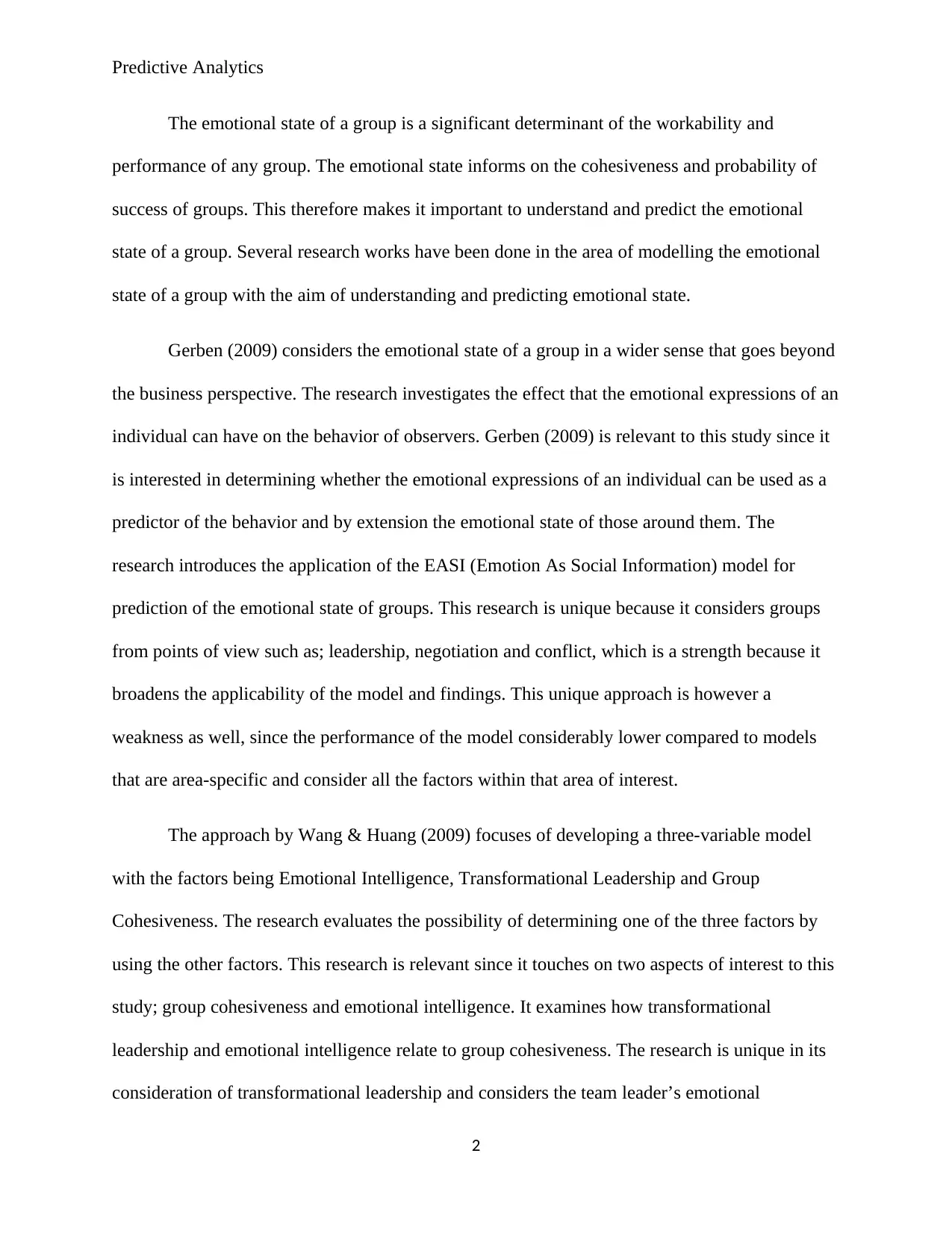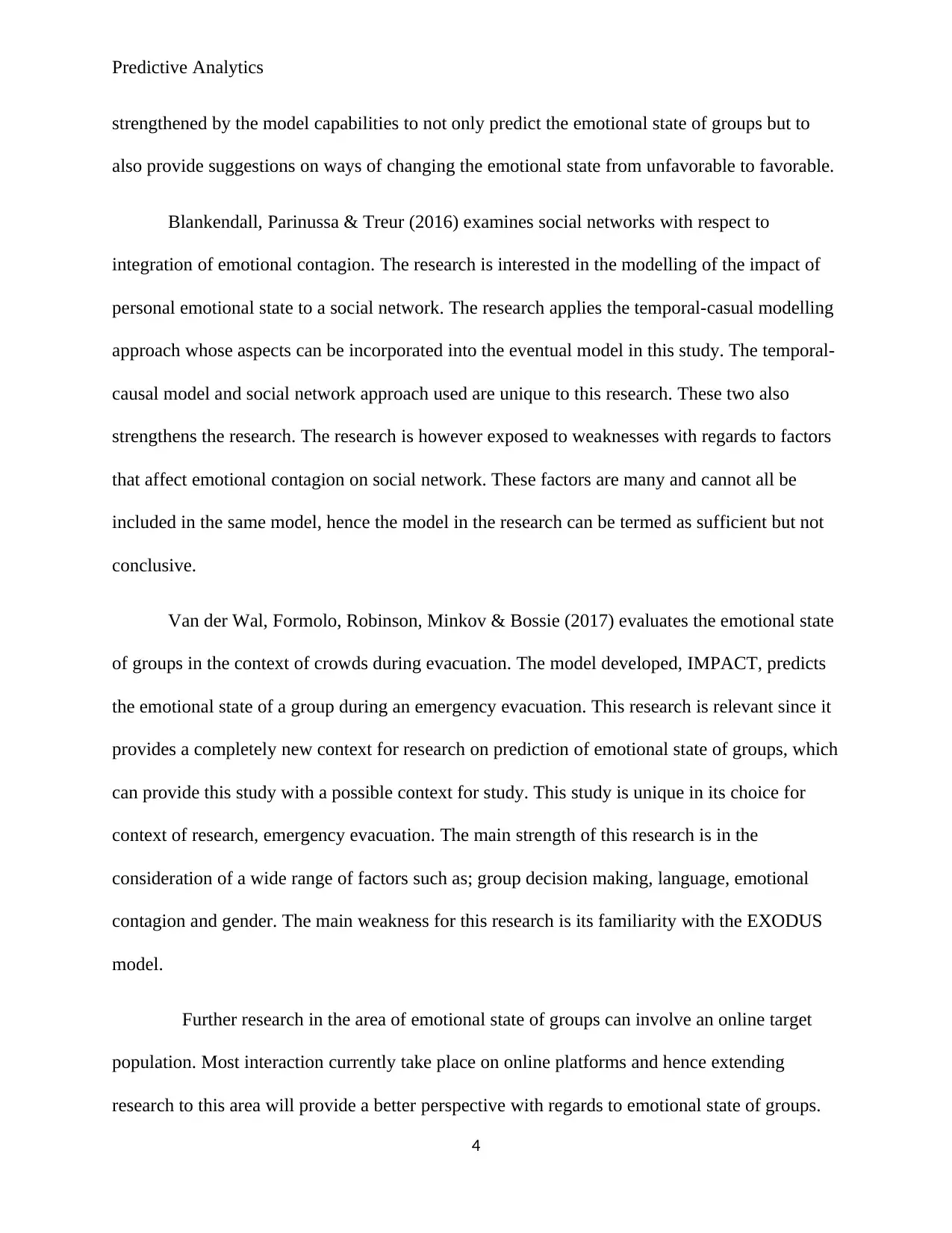conduct a comprehensive literature search and locate six additional scholarly peer-reviewed works that provide sufficient background. Create a literature review on the topic of predictive analysis and assessing the emotional state of a group. The focus should be on how much influence he mood or emotional state of a group may have on a prediction. For each article in your literature review, address the following: The work’s purpose A concise summary of its contents Its relevance to the topic An analysis of the contribution’s unique characteristics Your critical analysis of the study’s strengths and weaknesses Do not present a discrete list of article summaries and do not structure your response as an annotated bibliography. Instead, synthesize the information into a coherent and logical narrative relating and comparing recent research and insights into the assigned topic.
![[object Object]](/_next/static/media/star-bottom.7253800d.svg)
![[object Object]](/_next/static/media/star-bottom.7253800d.svg)






